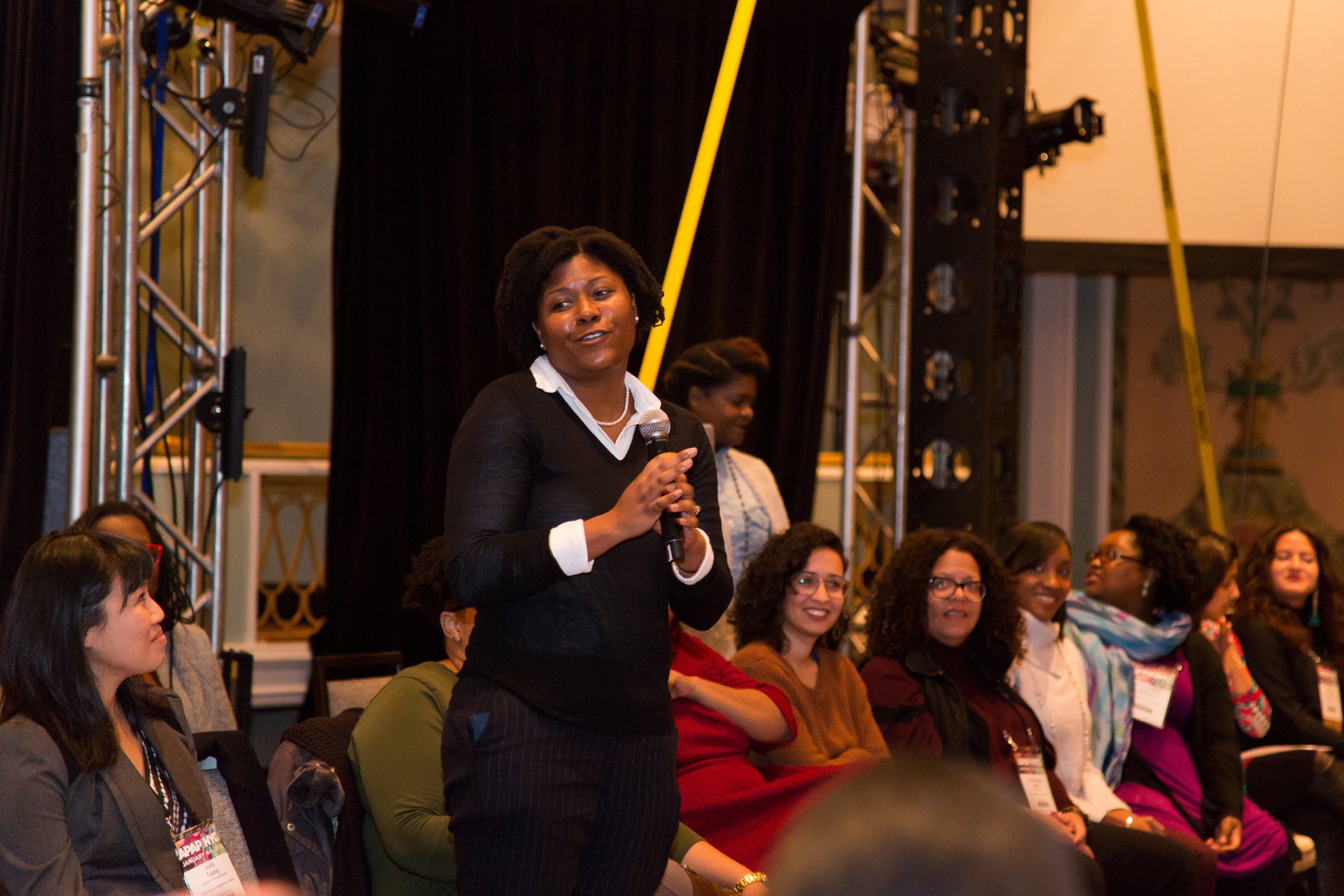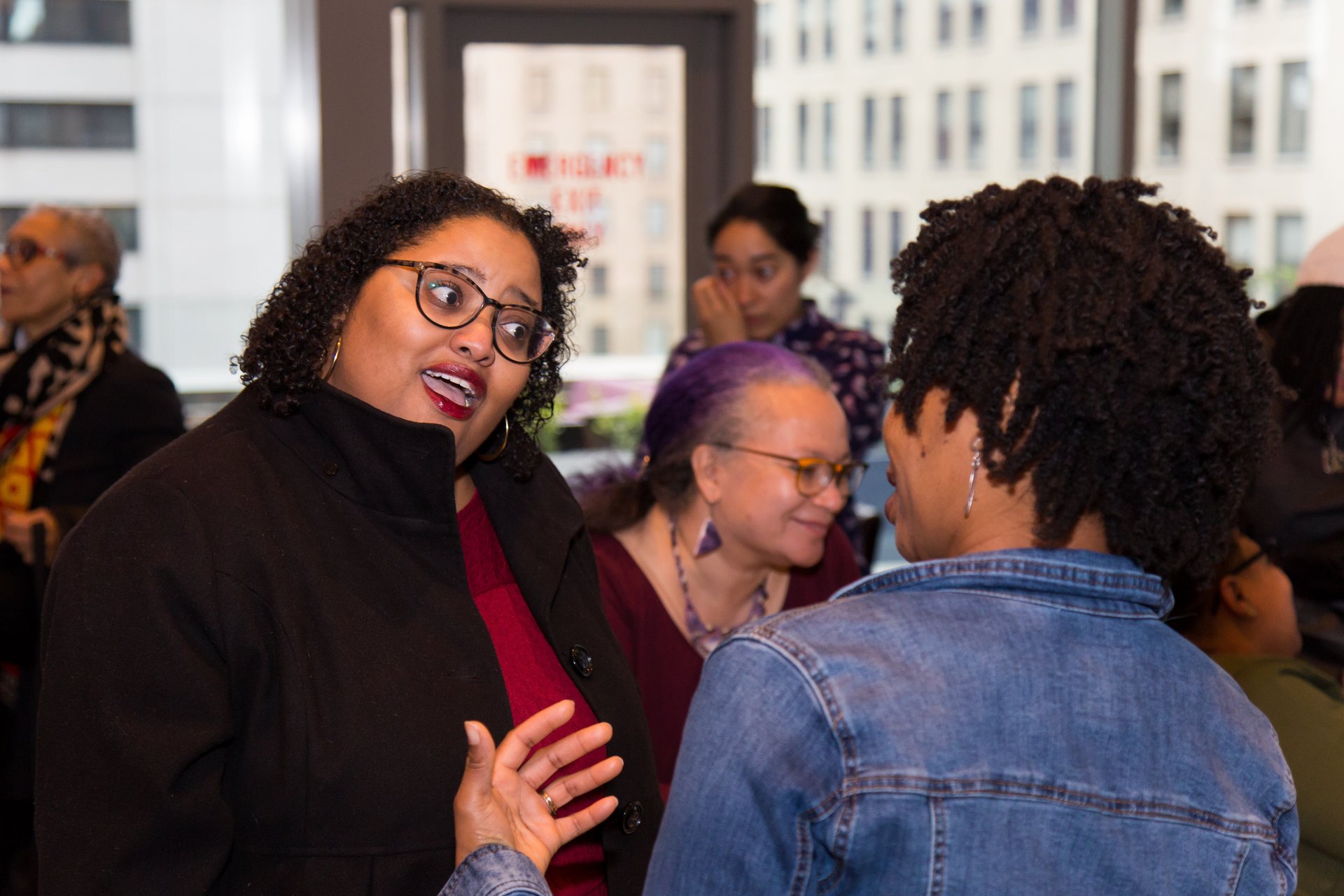Supporting minority women in the workplace means tailoring development programs to their needs
Aryana Alexis Anderson remembers breaking down in tears the first time she spoke one-on-one with her mentor.


Aryana Alexis Anderson remembers breaking down in tears the first time she spoke one-on-one with her mentor.
At the time, Anderson was working as the only black woman on her team at Carnegie Hall. For Anderson, the conversation was emotional because it finally hit her how “scared and fearful” she was about not belonging or thriving in the workplace. “I felt really isolated and alone,” Anderson recalled to Quartz, not only because she was the lone black woman on an all male team, but also because a coworker she considered an ally had recently left.
But despite Anderson’s concerns, that same conversation was also an opportunity to confide in another woman of color who had reached the executive level she aspired to. This mix of relatability and admiration, which many women of color are unlikely to find from within their own workplaces, would prove invaluable for Anderson.
Anderson’s mentor, Suzan Jenkins, is still the chief executive officer of the Arts and Humanities Council of Montgomery County, Maryland, and has over 20 years of experience in the non-profit arts and culture sector, plus several awards for her contribution to the field. Anderson and Jenkins met through a program called the Leadership Through Mentorship Initiative, run by Women of Color in the Arts (WOCA), an international network of female professionals dedicated to creating an equitable and inclusive arts field since 2009. Anderson applied to the program because she felt she needed additional support that was unavailable at her workplace.
“[My mentor] talked about her journey and how she overcame challenges,” Anderson said. They discussed strategies to deal with issues they faced as women of color, and Anderson put them into practice in her own work environment. Anderson said it was vital having a role model from outside work who would listen and give advice confidentially, as well as simply give her permission to be angry. Jenkins understood first-hand the challenges women of color face in the workplace, which also strengthened their mentor-mentee relationship.
One of the most important qualities of WOCA’s program, Anderson said, was that it was designed specifically for, and by, women of color, and the mentorship pairings seemed thoughtfully assigned. Jenkins guided Anderson through work proposals, successfully seeking a promotion, and sometimes simply the importance of self-care.
WOCA’s program helped Anderson thrive at Carnegie Hall for several years—she leaves this month to pursue other opportunities—but many other women of color don’t have access to that kind of resource.
In many workplaces, the lack of tailored development programs is detrimental to minority female employees’ career progression. It can also hinder a company’s ability to retain top talent. The value of mentorship and talent development programs is widely acknowledged, but businesses must acknowledge that a one size fits all approach is not inclusive. Women of color face specific challenges, such as microaggressions or little representation at the senior executive level, and this requires tailored mentorship or development programs that take such challenges into account. It’s clear from the diversity gap in leadership roles that there is still a long way to go.

According to a report by McKinsey, women of color account for only 4% of people in the C-suite, the top tier of a company’s most senior staffers including chief executive officers or chief financial officers, in the US. This makes them the most underrepresented demographic after men of color (9%), white women (19%), and white men (68%). This gap matters: Female respondents said in a separate McKinsey survey that the absence of female role models was a major barrier to moving into senior roles. Kaisha Johnson, founding director of WOCA, said it’s obstructive to not see people who look like you in positions where you want to be. “If you don’t see it, you don’t actually know it can exist or come to fruition.”
If women of color plateau at middle management positions, businesses also lose. “You have a brain drain happening in different companies because they are not supporting really good people who could be superstars, and they are going elsewhere,” Sable Lomax, founder of Real Brown Girls, a personal development organization, told Quartz. “And it’s not like they are necessarily supported elsewhere, so then you have a cycle.”
A major challenge for businesses is that they don’t know how to start effectively supporting female employees of color, Lomax said, which would help break that cycle. “It’s like an iceberg and [companies] are at the tip, and they know they are at the tip, but not knowing what’s at the bottom is really overwhelming.”
How companies can implement inclusive talent development
Businesses’ first step should be to determine if women of color are being left behind. Carol Watson, senior director of Global Advisory Services and Consulting at Diversity Best Practices, a membership organization that helps companies design diversity programs, said that companies should start by calculating the number of employees at each level within the company and then break it down by gender, race, and ethnicity. “Break out the data and see what is the narrative you have now,” Watson said. This hard data will highlight if minority women and other marginalized groups are leaving the company at a certain point, or fail to obtain promotions past a certain level.
Companies can also build a fuller picture of what minority women need by gathering anecdotal feedback through employee engagement surveys, which are designed to gauge if workers feel valued and involved in the workplace. Watson says many companies fail to ask questions about diversity and inclusion, but these questions are crucial to show how underrepresented groups feel and what specific problems they face. Watson suggests creating a council where key stakeholders, in this case women of color, can raise their concerns about the workplace. “Raising that visibility attracts talent and strengthens the culture,” she said.
While these internal actions are important for determining the needs of a company and its minority female employees, calling on outside experts is a strategic choice. “Companies hire consultants all the time,” Lomax said, and hiring external organizations to tailor development programs should be no different. “There is strength in partnerships,” she said.
WOCA, Diversity Best Practices, and Real Brown Girls, are all examples of organizations that will analyze the current institutional or cultural systems in a company that might contribute to discrimination, and provide consultancy services that include creating and operating development programs specifically for women of color. These groups also have the expertise and access to networks of minority female executives, particularly those who can serve as mentors, that most companies simply won’t have in-house. “Identifying a solutions partner may be the best approach to customizing” a way forward, Watson said.
Watson and Lomax also said it’s imperative that companies identify a clear goal, or else there is no metric to measure the success of a development or mentorship program. For instance, one goal might be having women of color comprise a certain portion of the corporate board. Another could be to reduce the turnover rate for women of color at certain staff levels, if there is a pattern of minority women leaving. The more specific the goal, the easier it is to develop a program to reach it and track its efficacy.
Ultimately, the aim is to sustain inclusive career support for women of color outside of development programs, which involves the actions of individuals at all levels of an organization. Johnson said that the success of development programs for women of color “cannot exist” unless what they’ve learned can be applied in, and supported by, their workplace. “You can have all have the black and brown folk in a room and in positions of ‘power,’ but an equitable environment is sustained by equitable practices,” she said. “If not, then you’re recreating the system.”
This is why many development programs for women of color, WOCA’s Leadership Through Mentorship and RBG’s services included, also emphasize the importance of opening up dialogues in workplaces continuously. Anderson, for instance, said she “became much more involved in equity and inclusion work for our education program” after Jenkins’ mentorship. She also started connecting with others at her work who shared the same concerns, and even organized a talk that addressed the issue of diversity. Companies can help sustain progress by creating a supportive workplace where women of color can pass what they’ve learned to other employees rising through the ranks.
“[I can] be a person of expertise and send the elevator back down,” Anderson said. “Completely voluntarily people had made space for me, and I could extend that space for other people, to other women of color in my organization, and we could be in this community safely together.”
Correction: This piece has been updated to reflect the accurate start date of the WOCA program, and Kaisha Johnson’s views.
This story is part of How We’ll Win in 2019, a year-long exploration of the fight for gender equality. Read more stories here.